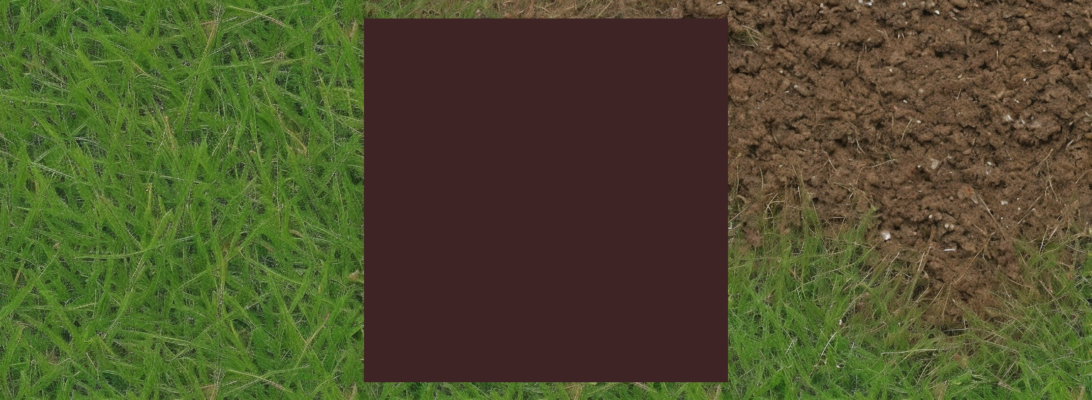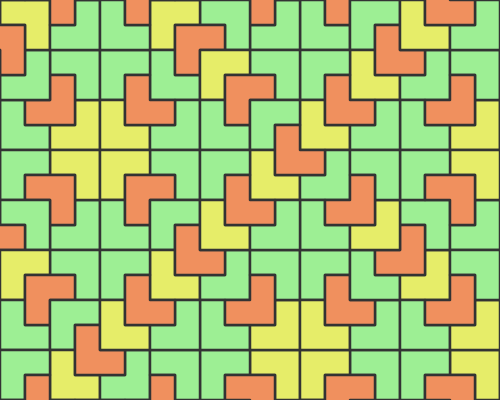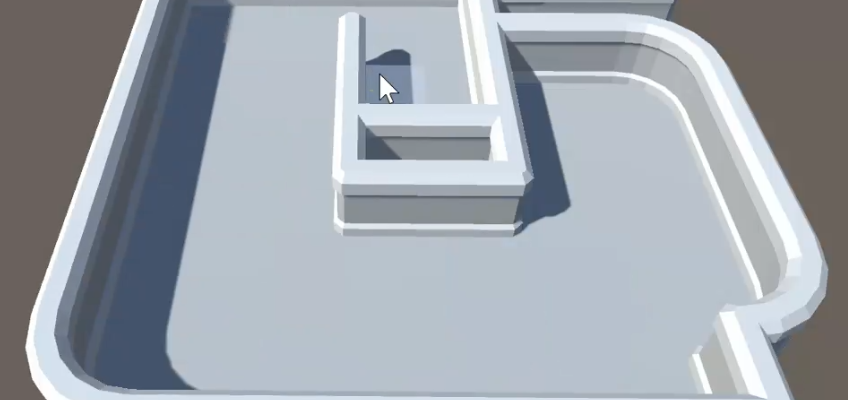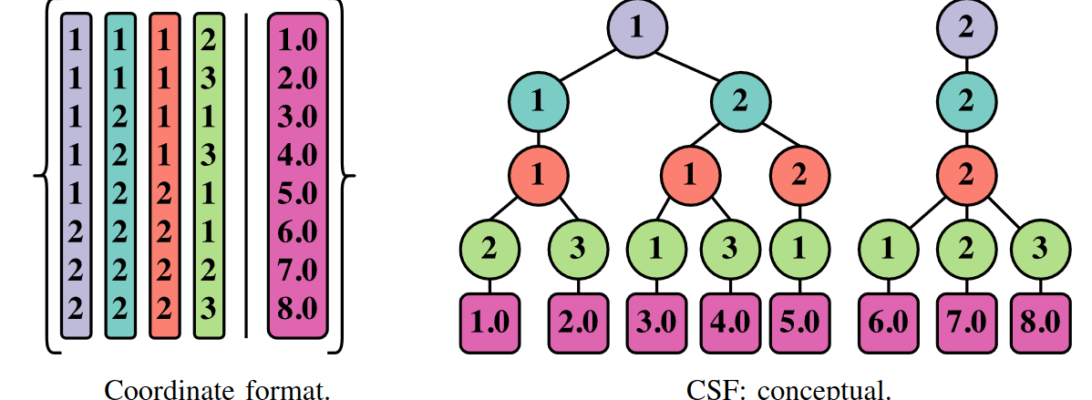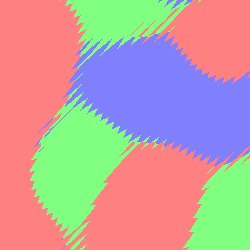Everyone loves the Townscaper grid. It’s got a a nice organic look, while still being quadrilateral tiles, somewhat regular, and reasonably easy to implement. But it has some annoyances. I’ve finally managed to find my own design of grid that has a very similar look, but fixes these problems.
Continue readingAdvanced
This category contains articles that require specialist knowledge or cover obscure areas. Often contain original research.
See Beginner and Intermediate for more articles.
Generating Tilesets with Stable Diffusion
Recently I’ve been playing around more with gen AI techniques. I thought I’d try to generate a set of tiles that all connect together. It’s harder than it sounds – Stable Diffusion is hard to control, so there’s no easy way to get a set of images that are fully consistent with one another.
I’ve developed a technique for doing it that I’ll call Non-Manifold Diffusion as it involves doing diffusion over a set of patches that interlock to form a non-manifold surface.
Continue readingSubstitution Tilings
I’ve been working on adding aperiodic grids to Sylves.
Aperiodic tilings are made tilings are made of a fixed set of tiles, rotated and translated to fully cover the plane.But they are not periodic – there’s no way to rotate/translate the whole grid onto itself.
This makes them almost hypnotic in their balance of regularity and chaos. A classic example is the penrose tiling.
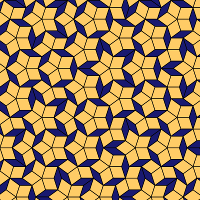
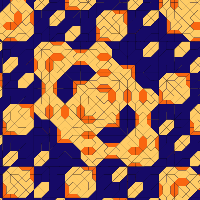
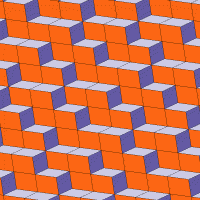
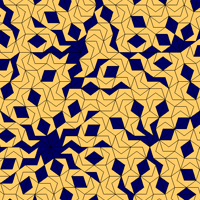
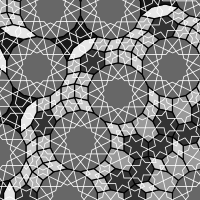
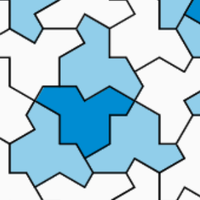
Editable WFC
When I spoke about autotiling, I briefly touched on how it’s possible to use Wave Function Collapse (or other constraint based generators) as a form of autotiling, i.e. user-directed editing of tilemaps.
I’ve usually referred to this technique as “editable WFC“. It’s a combination of autotiling and WFC, and contains the best of both:
- Being an autotiler, it allows users to easily and interactively make changes to an existing level.
- Being constraint based, it automatically ensures that those changes are consistent with the predefined rules of the constraints, potentially making further changes to the level to make it fit
This is different from most other autotilers, which either require manual configuration of patterns used to enforce good behaviour, hidden layers, or come with more stringent requirements on what tiles are available.
Continue readingAdvanced Table Constraints
Previously we considered the Arc Consistency 3 and Arc Consistency 4 algorithms, which are an essential component of many constraint solvers. I’ve been using AC-4 myself for some time, and I naturally got curious as to what other improvements can be made.
Diving it, I discovered there is a huge amount of papers with new innovations are refinements on these two fundamental techniques. I’m going to attempt to summarize them there, and maybe later experiment with them in my own software, but I’m afraid this article is going to be pretty niche.
Continue readingTessera: A Practical System for Extended WaveFunctionCollapse
I’ve been working a lot on Tessera. I presented a paper at the most recent PCG Workshop of FDG, where I explain how Tessera makes WaveFunctionCollapse somewhat less daunting, and go into some of the details of its features.
That may not be news for users of the software, but here I explain how things work, and what parts work well / I’m especially proud of.
Compressed Sparse Fibers Explained
I was browsing the Apache Arrow docs and spotted a term unfamiliar to me. Intrguied, I discovered that Compressed Sparse Fibers are a new technique for representing sparse tensors in memory. After reading up a bit, I thought I’d share with you what I’ve learnt. The technique is so new (well, 2015..) it is not mentioned on Wikipedia, and I found virtually nothing elsewhere. There’s a very limited number of ways to handle sparse data, so it’s always interesting to see a new one.
Don’t worry, I’d also never heard of a sparse tensor before, so I’m going to explain things right from the beginning, assuming you have a basic CS background, and don’t mind me going a little quickly.
Continue readingBarycentric Perlin Noise
Perlin noise is a classic procedural texture. It gives a wavy grayscale image, that has all sorts of uses in computer graphics. Commonly, it’s used to blend two textures together.

But what if you want to blend three or more textures together? Well today I have the answer.
Continue reading
Random Paths via Chiseling
I went over a previous project to randomly generate paths between points and came up with a much more efficient and versitile algorithm.
(EDIT: In 2022 I found an even better way.)
The algorithm is simple. Start with the entire area covered in path tiles, then and remove tiles one by one until only a thin path remains. When removing tiles, you cannot remove any tile that will cause the ends of the path to become disconnected. These are called articulation points (or cut-vertices). I use a fast algorithm based on DFS to find the articulation points. I had to modify the algorithm slightly so it only cares about articulation points that separate the ends, rather than anything which cuts the area in two. After identifying articulation points it’s just a matter of picking a random tile from the remaining points, and repeating. When there are no more removable tiles, you are done. Or you can stop early, to give a bit of a different feel.
I call it “chiseling” as you are carving the path out of a much larger space, piece by piece.
See on github .
Continue reading

